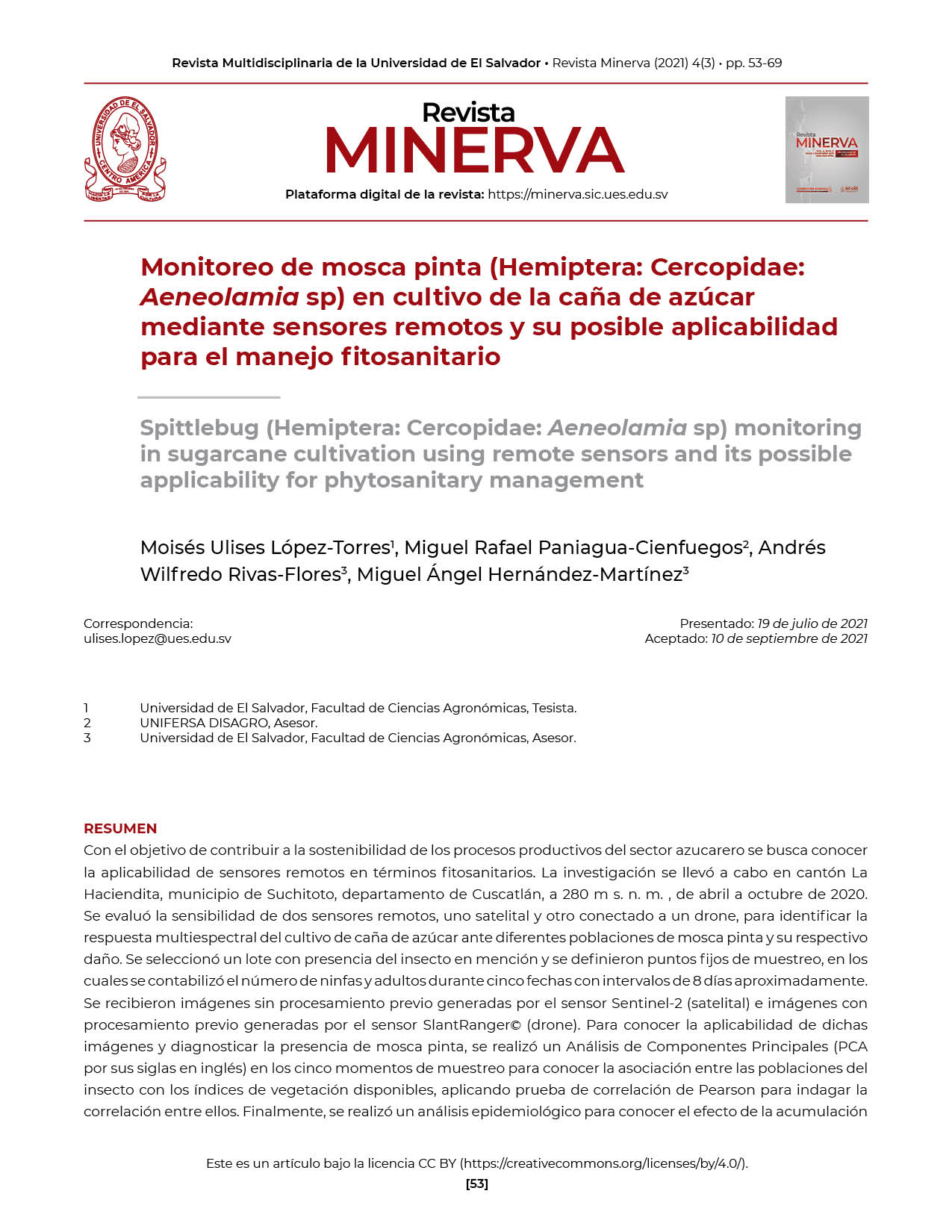Abstract
In order to contribute to the sustainability of the productive processes of the sugar sector, we seek to know the applicability of remote sensors in phytosanitary terms. The investigation was carried out in La Haciendita canton, Suchitoto municipality, Cuscatlán department, at 280 meters above sea level, from April to October 2020. The sensitivity of two remote sensors, one satellite and the other connected to a drone, was evaluated to identify the multispectral response of the sugarcane crop to different populations of the spittlebug and their respective damage. An allotment with the presence of the insect in question was selected and fixed sampling points were defined, in which the number of nymphs and adults were counted during five dates with intervals of approximately 8 days. Images without pre-processing generated by the Sentinel-2 sensor (satellite) and images with pre-processing generated by the Slantranger sensor (drone) were received. To know the applicability of these images to diagnose the presence of the spittlebug, a Principal Component Analysis was carried out at the five sampling moments to know the association between the insect populations and the available vegetation indices, and a Pearson´s correlation to know the correlation between them. Finally, an epidemiological analysis was carried out to know the effect of the accumulation of the spittlebug damage on the response of the crop expressed by the NDVI values, for this the formula of Area Under the Disease Progress Curve was used.
The NDVI indices calculated by both sensors are not useful to identify the presence of the spittlebug and its different populations at a given time, since the crop shows an stress condition due to the alteration of several factors (biotic and abiotic), including the spittlebug attack, and that limits the assertion that such stress is caused by a particular factor. In the five sampling moments, no association was found between the spittlebug population and the available indices, in addition the correlation values were extremely low (r=<0.5) to be used as indicators of the insect presence. However, it was found that the NDVI and STRESS indices used were influenced by the accumulated damage that the insect did; even though the populations decreased, its impact on the crop was evident.

This work is licensed under a Creative Commons Attribution 4.0 International License.
Copyright (c) 2021 Authors who publish in Revista Minerva agree to the following terms: Authors continue as owners of their work, assigning only dissemination rights to Minerva Magazine under the standards of the Creative Commons Attribution 4.0 International License (CC BY 4.0). This license allows others to mix, adapt and build upon the work for any purpose, including commercially, and although new works must also acknowledge the initial author, they do not have to license derivative works under the same terms.




